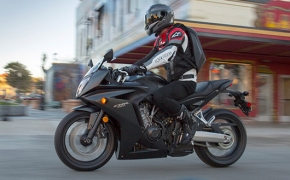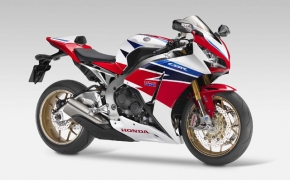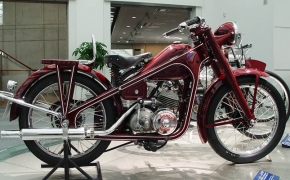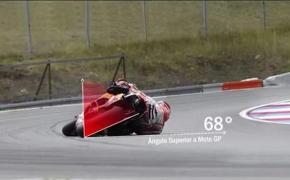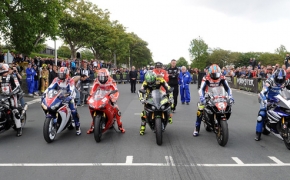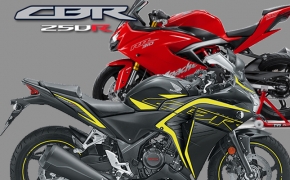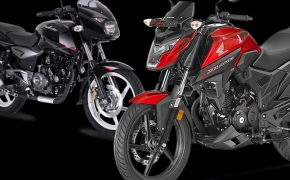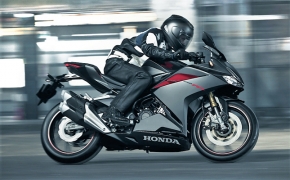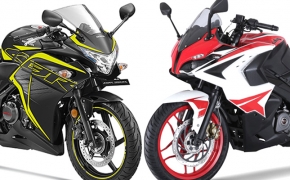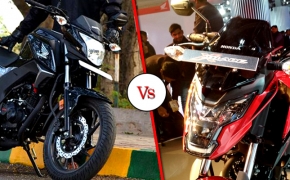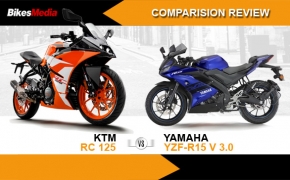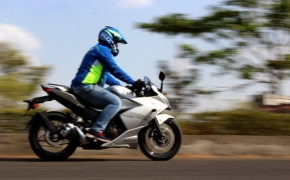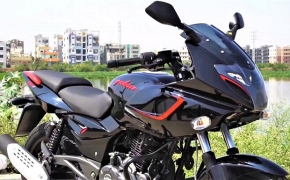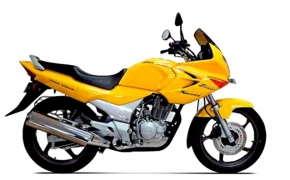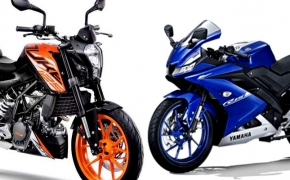Honda has been in the forefront when it comes to performance motorcycles of all shapes and sizes. The company has a vast array of liquid cooled engines from a small 125cc single cylinder on the CBR125 to the Massive 1832cc flat six engine of the Legendary Valkyrie power cruiser. But perhaps the most renowned name in the 1000cc segment is unarguably- the Fireblade.
The Fireblade marque came into existence back in 1992, when Tadao Baba developed an all new 900cc liquid cooled inline four engine, to counter the likes of the Kawasaki GPZ900R which was the first Ninja, and the Rock solid Suzuki GSX-R 1100. Honda named the bike as the CBR 900RR "Fireblade", which was the most radical motorcycle in terms of weight reduction. This Motorcycle weighed 2 kg more than Honda's supersport offering- the 600F2 and was the lightest in its class, beating the Yamaha FZR1000 by a whopping 34 kilos. This motorcycle was the first step by Honda towards manufacturing one of the best sportbikes in the world.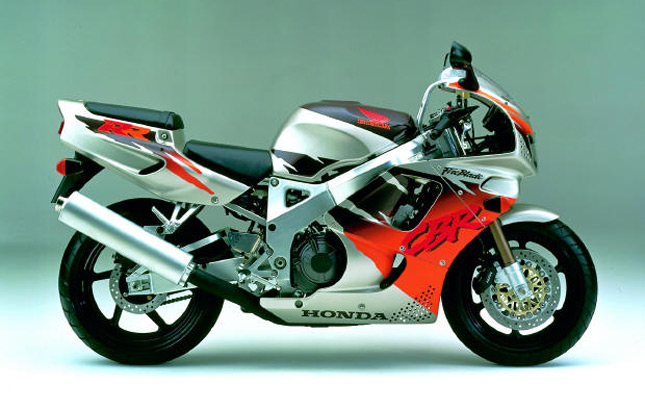
This bike remained unchanged from 1992 to 1995, with the 1996 model being an enlarged version of the 900cc engine. The engine is a 918 cc one, achieved by a 01 mm increase in bore. Many other changes were under the hood, like a reinforced chassis, with an altered swingarm and rake angle. This version continued till 1997.
1998 saw a change in many departments like revised suspension, larger front discs,a more aerodynamically designed fairing and raised footpegs.The engine internals are totally redesigned to make it more lighter and more compact.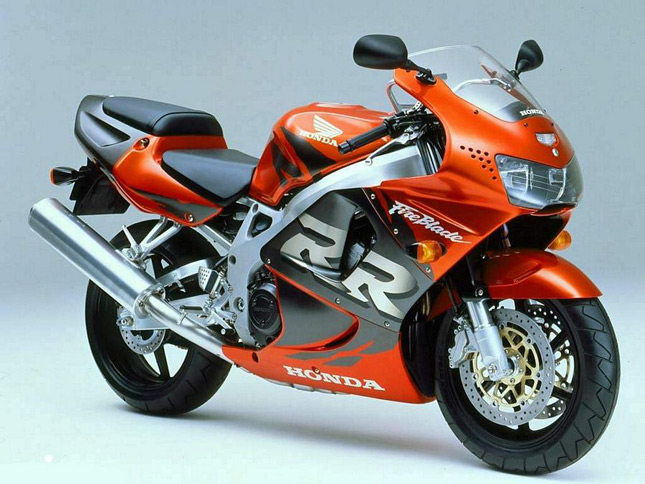
Year 2000 marks the entry to the new millennium and also, the entry of the all new 929RR. The 929RR was a completely redesigned bike, powered by a 929cc inline four. Fueled by Honda's radical fuel injection system- The PGM-Fi, produced 150 Horsepower at 11,000 rpm. Other radical innovations include a pivotless chassis in which the swingarm is mounted to the engine case by means of a brace, but not the chassis. Brakes were upgraded, new Upside down forks were introduced and the 16" front wheel was replaced with a more common 17" one. The 929RR is replaced By the 954RR in 2002.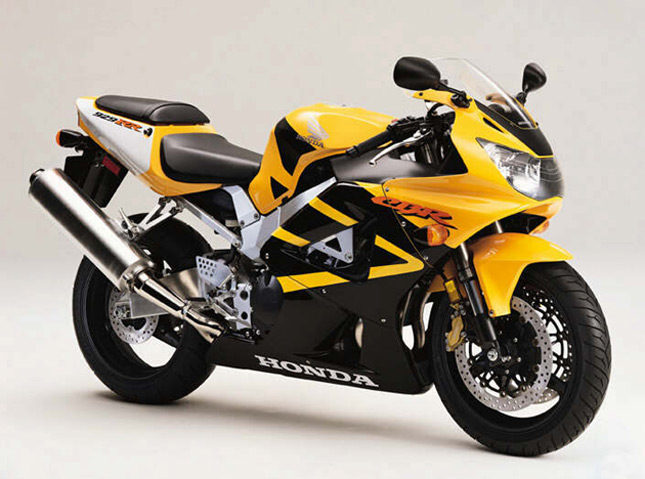
The 2002 arrived with Honda further revising the 929RR into a larger 954RR. The bike now gets a more powerful ECU, larger injectors and revised mapping, to name a few. Redesigned fairings gave the bike a sleeker and more meaner look, while achieving a more aerodynamic profile. These changes made the 954 tip the scales at a mere 168 kg (dry), the weight of modern MotoGP bikes.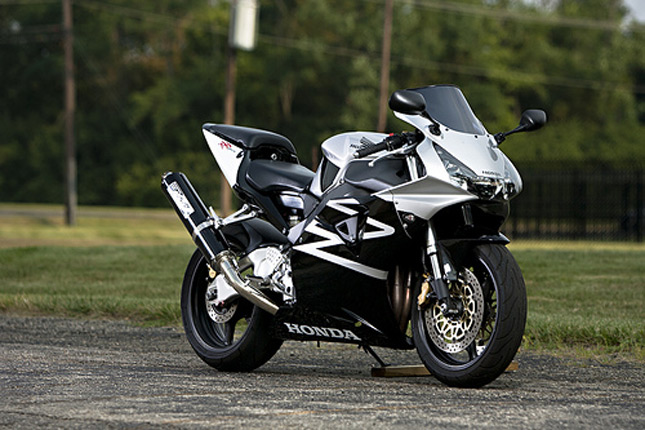
For the year 2004, the 954RR was replaced by a all new bike- the 1000RR. The 1000RR was designed by inputs from the MotoGP development team, and incorporated various technologies which were tried and tested by its supersport compatriot- the CBR 600RR.
The 2004 1000RR was a totally new motorcycle, with an all new chassis, engine , a Race-style Cassette type gearbox, Sophisticated ECU which controls Ram-air intakes and exhaust butterfly valves, and the Revolutionary PGM-DSFi.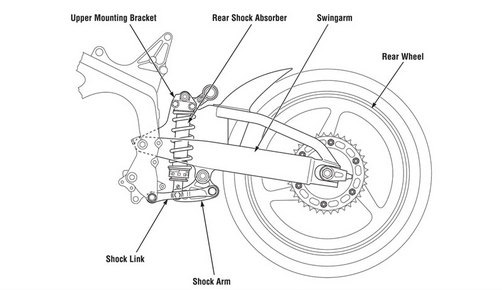
The rear end has a longer swingarm and the Unit pro-link suspension setup, previously used in the CBR 600RR and the RC211V MotoGP prototype. The longer swingarm improved rear- end traction and more progressive suspension travel.
The PGM-DSFi or Programmable Dual Stage Fuel injection traces its roots back into the most successful Formula one program- The McLaren Hondas of the early 90's, the same Technology is incorporated into Honda's first 4 stroke GP prototype- the RC211V and the CBR brothers. This technology incorporates four 12- hole injectors mounted in 40mm throttle bodies, arranged very far away from each other. the secondary injector starts working post 5500 rpm, thus improving the power delivery and fuel consumption drastically. Honda also incorporated the three shafts in the engine in a triangular pattern- as found on the Yamaha R1. This bike had a unique system called the HESD or electronic steering damper system, which reduced the tendency to wobble at high speeds and improved stability-the first ever in this segment.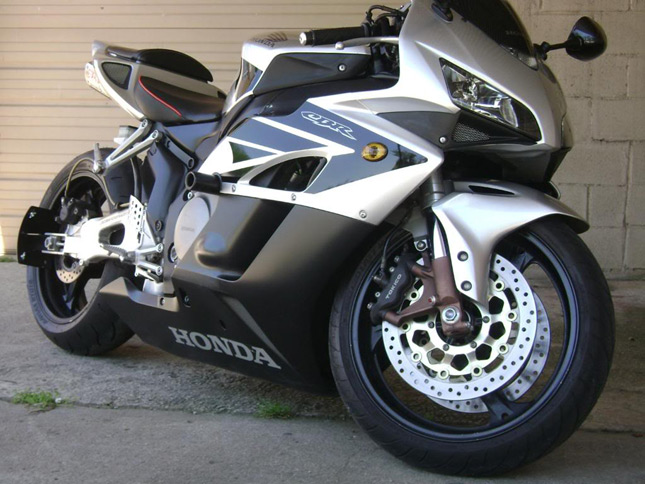
The 2006-2007 version brought in more changes to the bike like reduced weight and better mass centralization, higher compression ratio, revised final gearing, higher valve lift and newer chassis geometry to name a few. The bike carried some aesthetic changes like a revised front fairing among many others. This bike remained unchanged for 2007 except for newer paint schemes.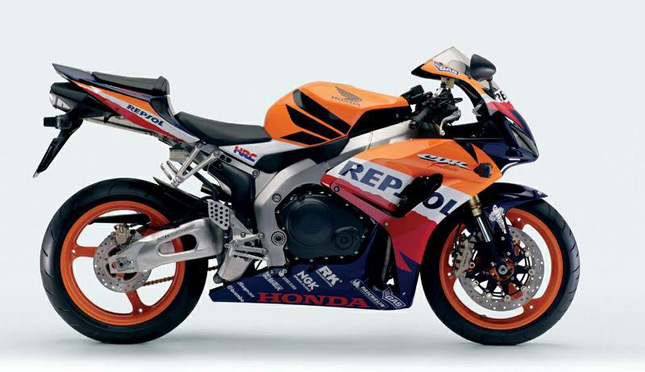
The 1000RR underwent a massive surgery in 2008, with a revised engine and more modern looking fairings. The 1000RR got titanium valves, larger bore and lighter internals, pushing the redline further up to 13,000rpm. the higher compression ratio is assisted by a larger airbox connected to the ram air intakes present below the headlamps, and multiple fuel maps to attain crisp power delivery at any Rpm. To attain mass centralization, the old school underseat exhaust has been replaced by a conventional side swung exhaust.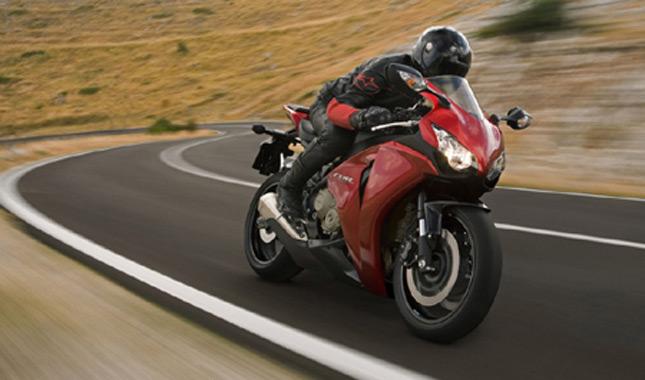
The CBR remained largely unchanged from 2008 till 2015, except for some minor upgrades like an upgraded showa fork and all LCD dash for the 2012 model. Honda launched the SP and Urban Tiger versions of the 1000RR, the former being a performance package and the latter- cosmetic.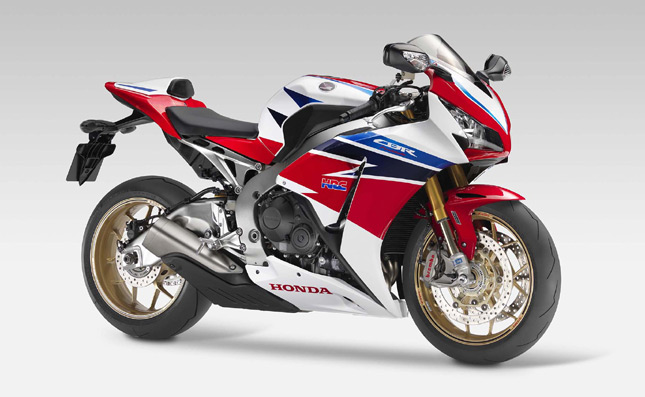
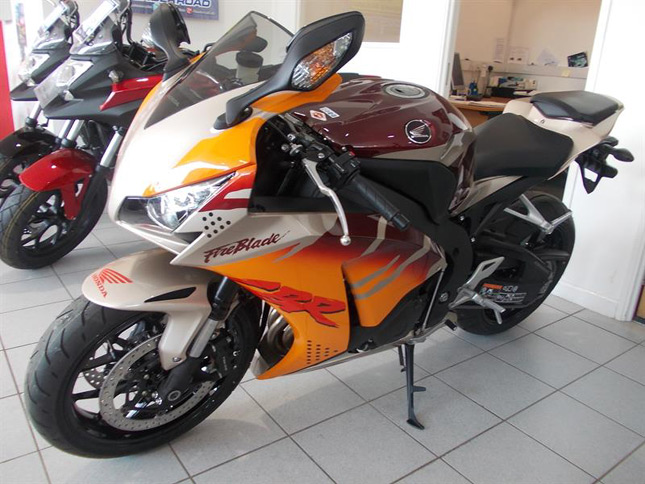
By: Suraj
The Fireblade marque came into existence back in 1992, when Tadao Baba developed an all new 900cc liquid cooled inline four engine, to counter the likes of the Kawasaki GPZ900R which was the first Ninja, and the Rock solid Suzuki GSX-R 1100. Honda named the bike as the CBR 900RR "Fireblade", which was the most radical motorcycle in terms of weight reduction. This Motorcycle weighed 2 kg more than Honda's supersport offering- the 600F2 and was the lightest in its class, beating the Yamaha FZR1000 by a whopping 34 kilos. This motorcycle was the first step by Honda towards manufacturing one of the best sportbikes in the world.

**The 1992 Honda CBR 900RR- In the Much Loved "Urban Tiger" Livery
This bike remained unchanged from 1992 to 1995, with the 1996 model being an enlarged version of the 900cc engine. The engine is a 918 cc one, achieved by a 01 mm increase in bore. Many other changes were under the hood, like a reinforced chassis, with an altered swingarm and rake angle. This version continued till 1997.
1998 saw a change in many departments like revised suspension, larger front discs,a more aerodynamically designed fairing and raised footpegs.The engine internals are totally redesigned to make it more lighter and more compact.

** The 1996-'99 Honda CBR 919RR
Year 2000 marks the entry to the new millennium and also, the entry of the all new 929RR. The 929RR was a completely redesigned bike, powered by a 929cc inline four. Fueled by Honda's radical fuel injection system- The PGM-Fi, produced 150 Horsepower at 11,000 rpm. Other radical innovations include a pivotless chassis in which the swingarm is mounted to the engine case by means of a brace, but not the chassis. Brakes were upgraded, new Upside down forks were introduced and the 16" front wheel was replaced with a more common 17" one. The 929RR is replaced By the 954RR in 2002.

**The 2000 Honda CBR 929RR- the dawn of the Fuel injection era
The 2002 arrived with Honda further revising the 929RR into a larger 954RR. The bike now gets a more powerful ECU, larger injectors and revised mapping, to name a few. Redesigned fairings gave the bike a sleeker and more meaner look, while achieving a more aerodynamic profile. These changes made the 954 tip the scales at a mere 168 kg (dry), the weight of modern MotoGP bikes.

**The 2002 Honda CBR 954RR- The most beautiful motorcycle of the early 2000's
For the year 2004, the 954RR was replaced by a all new bike- the 1000RR. The 1000RR was designed by inputs from the MotoGP development team, and incorporated various technologies which were tried and tested by its supersport compatriot- the CBR 600RR.
The 2004 1000RR was a totally new motorcycle, with an all new chassis, engine , a Race-style Cassette type gearbox, Sophisticated ECU which controls Ram-air intakes and exhaust butterfly valves, and the Revolutionary PGM-DSFi.

**Schematic diagram of the Unit pro-link suspension (Source: powersports.honda.com)
The rear end has a longer swingarm and the Unit pro-link suspension setup, previously used in the CBR 600RR and the RC211V MotoGP prototype. The longer swingarm improved rear- end traction and more progressive suspension travel.
The PGM-DSFi or Programmable Dual Stage Fuel injection traces its roots back into the most successful Formula one program- The McLaren Hondas of the early 90's, the same Technology is incorporated into Honda's first 4 stroke GP prototype- the RC211V and the CBR brothers. This technology incorporates four 12- hole injectors mounted in 40mm throttle bodies, arranged very far away from each other. the secondary injector starts working post 5500 rpm, thus improving the power delivery and fuel consumption drastically. Honda also incorporated the three shafts in the engine in a triangular pattern- as found on the Yamaha R1. This bike had a unique system called the HESD or electronic steering damper system, which reduced the tendency to wobble at high speeds and improved stability-the first ever in this segment.

**The 2004-'05 Honda CBR 1000RR
The 2006-2007 version brought in more changes to the bike like reduced weight and better mass centralization, higher compression ratio, revised final gearing, higher valve lift and newer chassis geometry to name a few. The bike carried some aesthetic changes like a revised front fairing among many others. This bike remained unchanged for 2007 except for newer paint schemes.

**The 2007 Honda CBR 1000RR in Repsol Honda colors
The 1000RR underwent a massive surgery in 2008, with a revised engine and more modern looking fairings. The 1000RR got titanium valves, larger bore and lighter internals, pushing the redline further up to 13,000rpm. the higher compression ratio is assisted by a larger airbox connected to the ram air intakes present below the headlamps, and multiple fuel maps to attain crisp power delivery at any Rpm. To attain mass centralization, the old school underseat exhaust has been replaced by a conventional side swung exhaust.

**The 2008-2015 Honda CBR 1000RR
The CBR remained largely unchanged from 2008 till 2015, except for some minor upgrades like an upgraded showa fork and all LCD dash for the 2012 model. Honda launched the SP and Urban Tiger versions of the 1000RR, the former being a performance package and the latter- cosmetic.

**The 2014 Honda 1000RR SP

**The Nostalgic "Urban Tiger" Livery on the 2014 1000RR
By: Suraj












